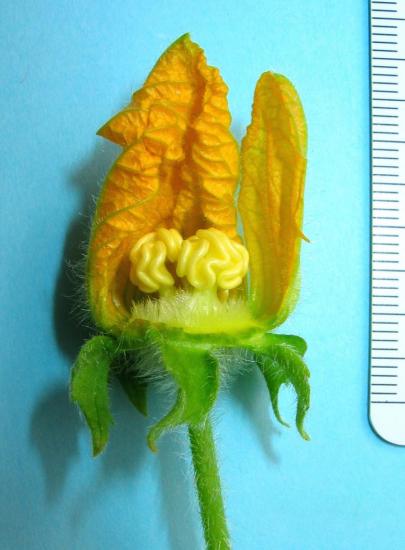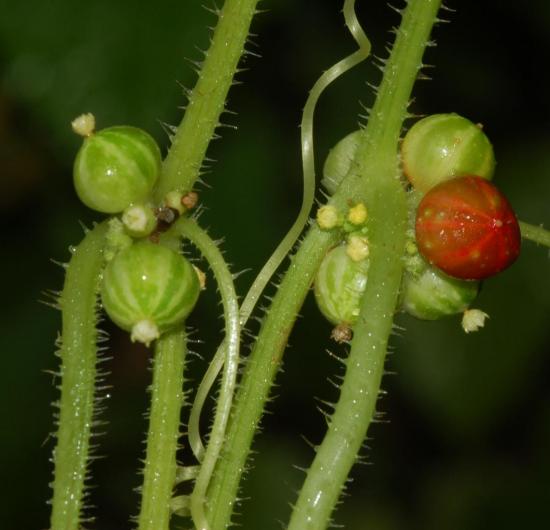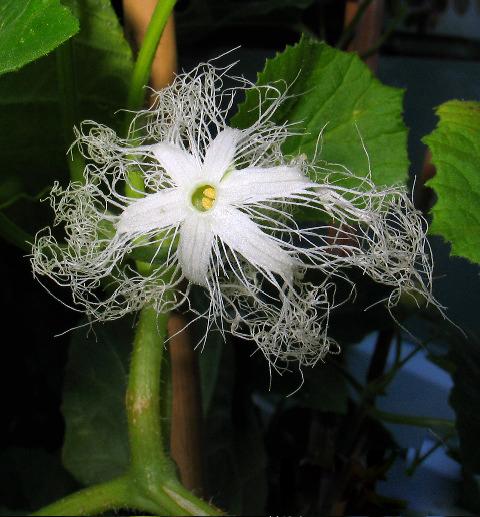New checklist brings information about Cucurbitaceae up to date
Source - http://phys.org/news/2013-03-genetic-indian-pumpkins-cucumbers.html#jCp

This is a picture of Benincasa hispida or winter melon, also called white gourd- an opened male flower. Credit: Dr. Susanne Renner
In 2010, it was shown that melons and cucumbers can be traced back to India. Because of the importance of the region for an understanding of Cucurbitaceae evolution and diversity, a new checklist of the Cucurbitaceae of India was produced to update the information on that family. The study was published in the open access journal PhytoKeys.
Vegetables are essential components of a healthy daily diet, not just in India but around the globe. Compared to grains and pulses, however, vegetables are under-investigated taxonomically, and information on their genome is scarce. The cucumber family, Cucurbitaceae, includes many of our favorite foods: pumpkins, melon, cucumber, watermelon, bottle gourds, and bitter gourd. Molecular data have recently revealed that both cucumber (Cucumis sativus L.) and melon (Cucumis melo L.) are indigenous to India and likely to have originated from the foothills of the Himalayas.
Arun Pandey from the Department of Botany, University of Delhi, India and Susanne Renner from the Departments of Systematic Botany and Mycology, University of Munich, Germany decided to produce a checklist of the Cucurbitaceae of India that would bring up-to-date the information available for that family. The list treats 400 relevant names and provides information on the collecting locations for all type specimens. The list includes 94 species (10 of them endemic to India) from 31 genera.

This is a picture of Cucumis ritchiei, from India - one of the many wild relatives of cucumber and melon. Credit: Dr. Susanne Renner
For each species, the checklist provides distributional information, electronic links to images of living or dried plants, and information on publicly available DNA sequences. Of the 94 species, 79% have DNA sequences in GenBank, albeit rarely stemming from Indian material. The most species-rich genera are Trichosanthes with 22 species, Cucumis with 11 (all but two wild), and the bitter gourd genus, Momordica, with eight. The checklist also includes a phylogenetic reconstruction of the family that shows the DNA-based placement of the 31 Indian genera relative to the World's remaining Cucurbitaceae.

This is a picture of, Trichosanthes cucumerina, snake gourd or serpent gourd - a nocturnal flower Credit: Dr. Susanne Renner
Dr. Suzanne Renner, one of the authors of the article, comments: "Updating and summarising the available information on Indian Cucurbitaceae and linking it to molecular data and images may help to focus phylogenetic and floristic research on poorly known species, and potentially strengthen conservation efforts. It may also provide vital genetic information to improve the current varieties of pumpkins, cucumbers, and their relatives."